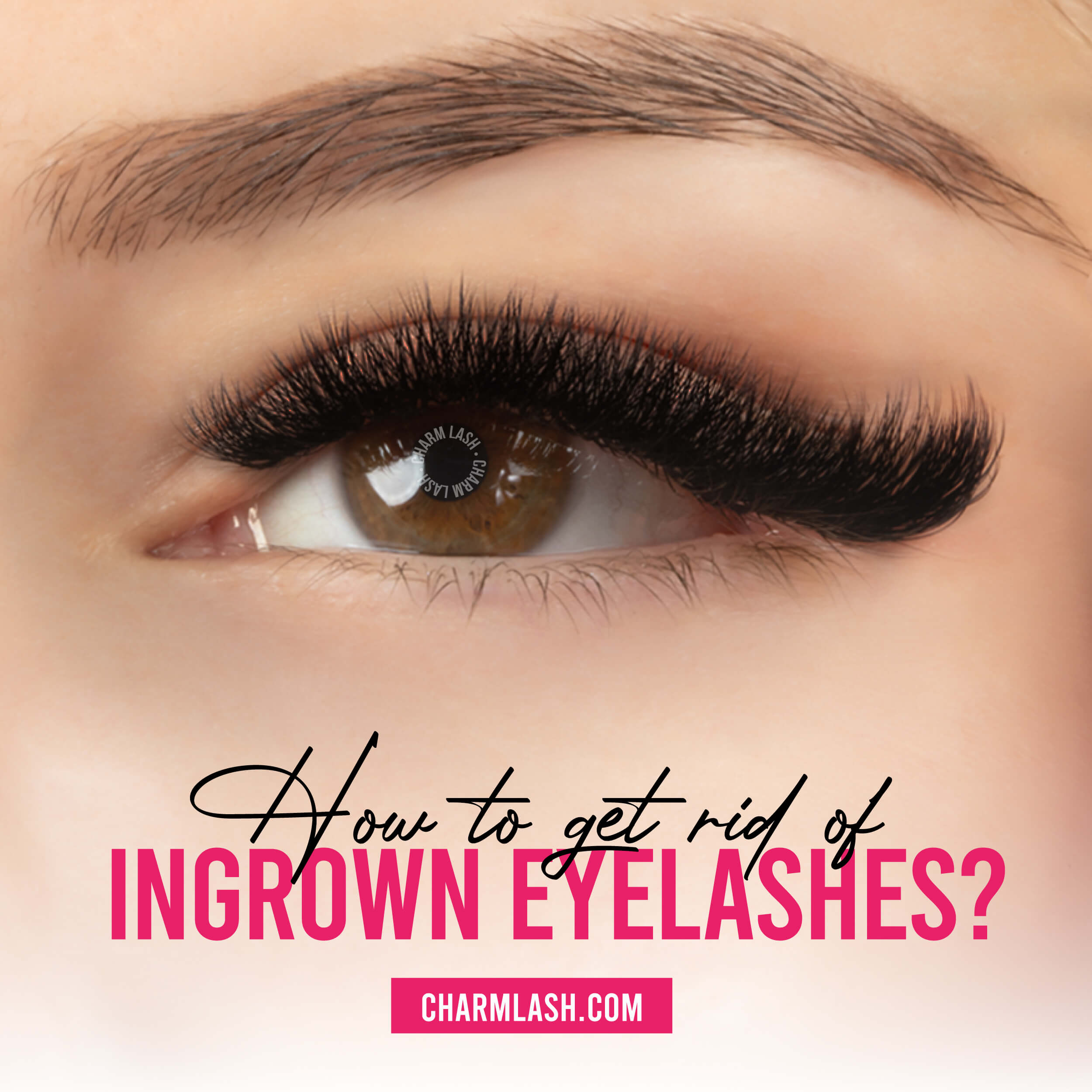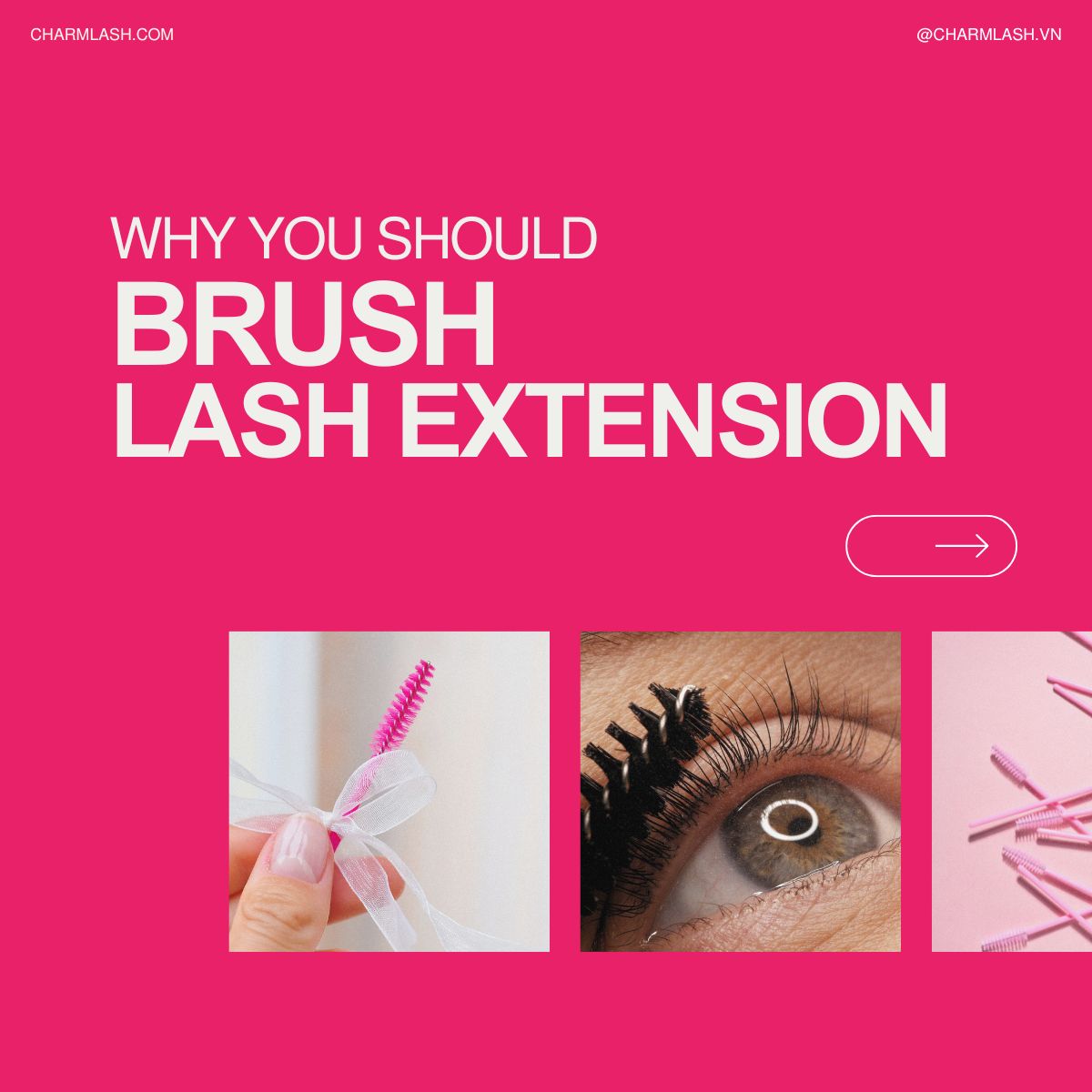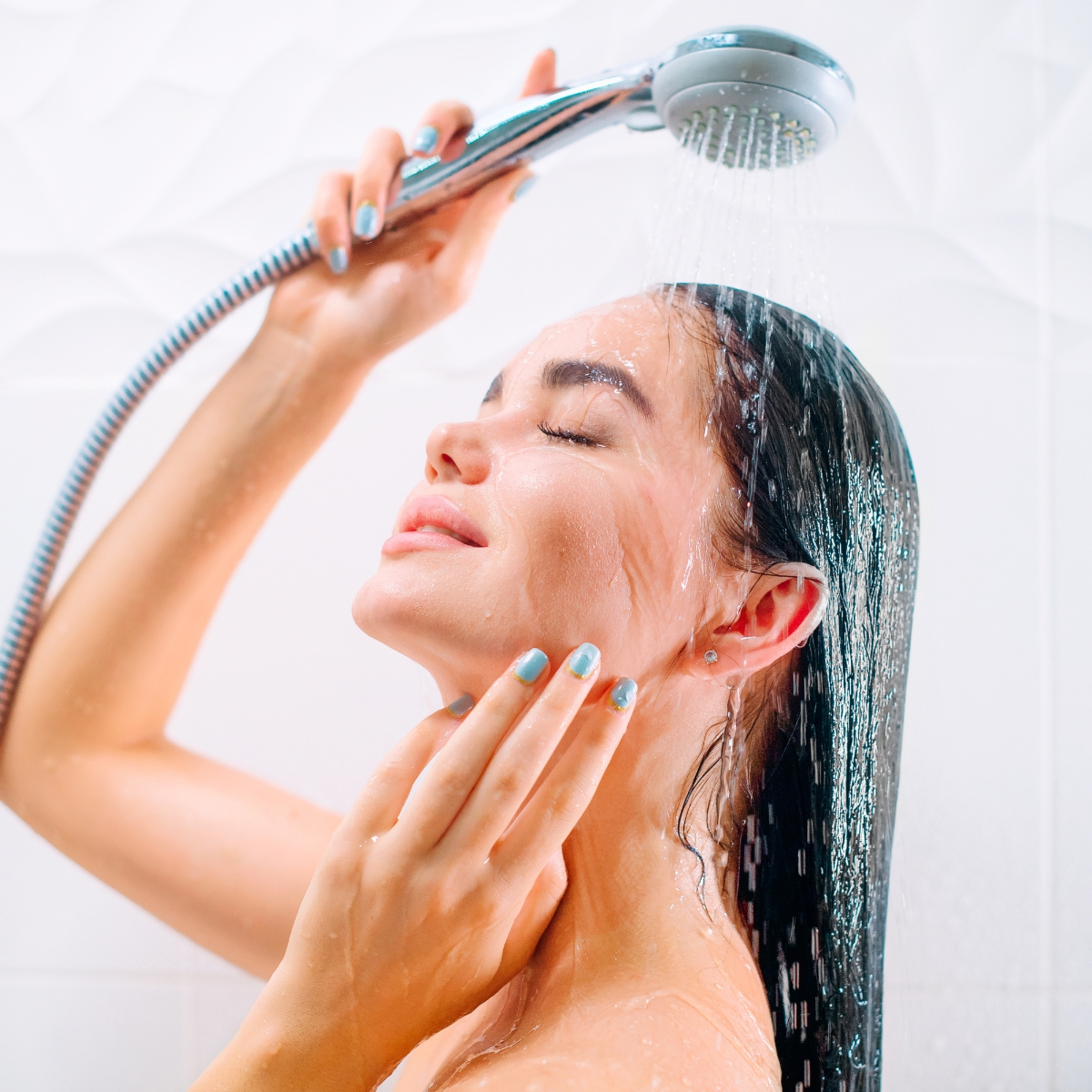As a lash artist, receiving a message from a client about their eyes being red, swollen, or irritated can be anxiety-inducing. The question often follows: “Is this normal?” While mild irritation may be common after a lash extension application, it might indicate an allergic reaction to eyelash glue.
In this post, we will dive deep into understanding allergic to eyelash glue reactions, how to manage them, and the best ways to help your clients when they experience these uncomfortable symptoms.
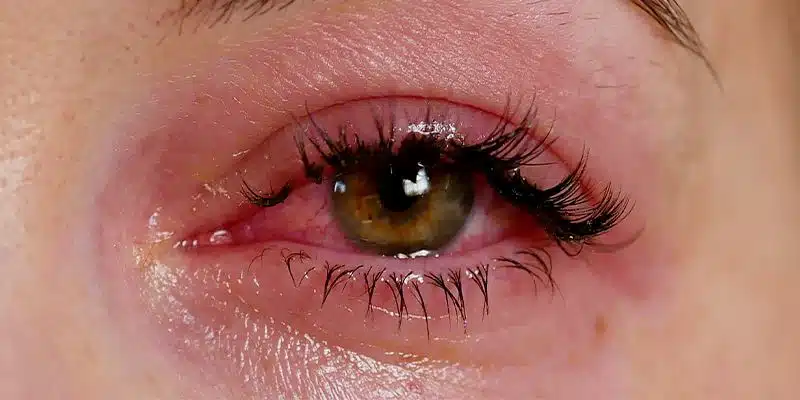
What is an Eyelash Glue Allergy?
An allergic to eyelash glue reaction occurs when the body perceives a substance, known as an allergen, as harmful. The immune system goes into defense mode, producing antibodies to fight the perceived threat. This process triggers symptoms that range from mild to severe, depending on the individual’s sensitivity to the allergen.
While the exact reason why some individuals develop an allergy and others do not remains unclear, repeated exposure can worsen reactions. The more the body is exposed to the allergen, the more intensely it reacts.
Eyelash Glue Sensitivity vs. Eyelash Glue Allergy
Differentiating between sensitivity and allergic to eyelash glue is crucial for lash artists, as both can cause discomfort but require different approaches.
1. Lash Glue Sensitivity: Sensitive clients may experience mild symptoms such as watery eyes, a runny nose, or slight congestion. These symptoms are temporary and often subside within 24 hours after exposure. Clients with sensitivity usually don’t need medical intervention, but adjusting the glue formula or application technique may help.
2. Lash Glue Allergy: In contrast, an allergic reaction involves more severe symptoms, such as swollen eyelids, itching, or pain around the eyes. These symptoms don’t resolve on their own and require the immediate removal of the lash extensions. Allergic reactions can appear even if a client has previously tolerated the glue well, especially if their immune system is weakened by factors like stress, illness, or fatigue.
Causes of Eyelash Glue Allergy
The primary cause of being allergic to eyelash glue is cyanoacrylate, a chemical found in almost all lash adhesives. Cyanoacrylate reacts to humidity, curing the glue and bonding the extension to the natural lash. Unfortunately, it also tends to interact with moisture found around the eyes and nostrils, which are some of the most humid areas on the face. This interaction often leads to symptoms like watery eyes, runny noses, and, in more severe cases, swelling and discomfort.
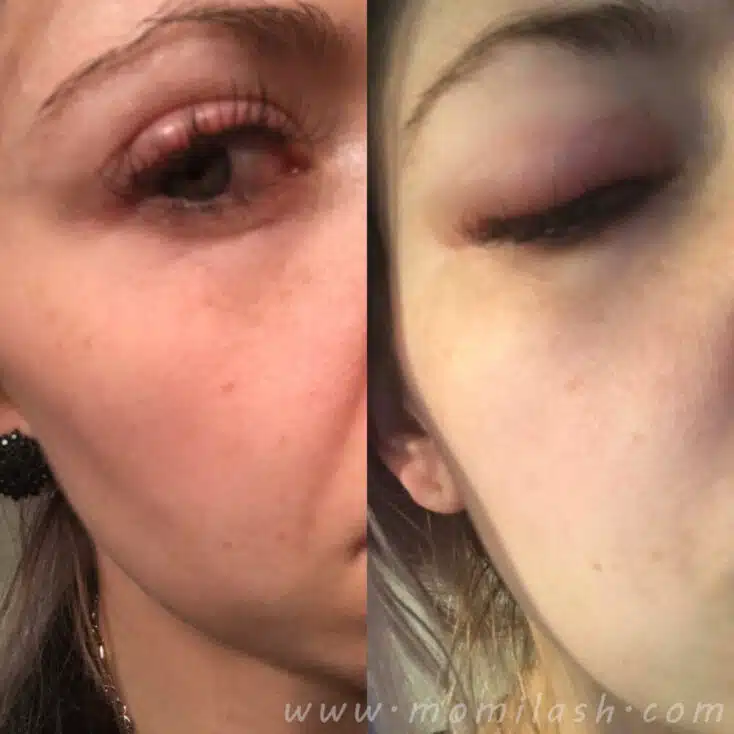
It’s important to note that cyanoacrylate allergies are similar to other allergies, like those to pollen or peanuts. Once a client becomes allergic to eyelash glue, their body will “remember” the allergen, leading to a permanent sensitivity.
How Long Do Reactions to Eyelash Glue Last?
Clients who are allergic to eyelash glue may experience these symptoms shortly after the lash application or within 24 hours. In some cases, symptoms may develop more gradually. If a client contacts you with these symptoms, it’s essential to act quickly and offer the appropriate advice.
Is Lash Extension Glue Allergy Dangerous?
While an eyelash glue allergy can be uncomfortable and alarming for the client, it’s generally not dangerous as long as the proper steps are taken. Removing the lash extensions typically resolves the symptoms. However, if a client continues to get lash extensions despite having developed an allergy, the reaction could worsen with repeated exposure.
It’s also worth noting that lash artists themselves are at risk of developing an allergy to lash glue over time, especially if they are exposed to the fumes for long periods. Taking preventative measures, such as using anti-allergy gels and maintaining good ventilation, can help reduce the risk.
How to Deal with the Allergic to Eyelash Glue
If your client experiences symptoms of an allergic reaction to eyelash glue, here’s how you can handle the situation without panicking:
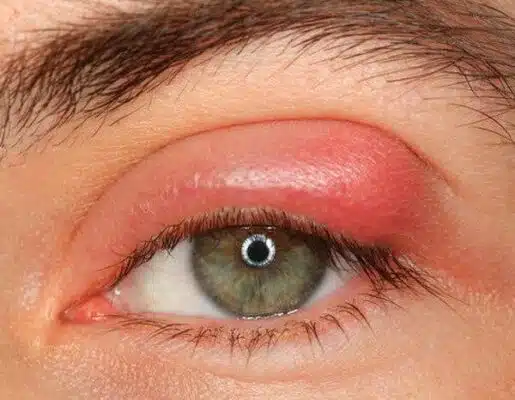
1. Assess the Situation
First, ask your client for a detailed description of their symptoms. Are they experiencing mild irritation (suggestive of sensitivity) or more severe signs like swelling and pain (indicative of an allergic reaction)? This will help you determine whether immediate removal of the lashes is necessary.
2. Treat Mild Symptoms
For clients with mild symptoms, you can suggest the following treatments to provide some relief:
- Cold Compress: Encourage your client to apply a cold compress to their eyelids. While this won’t cure the allergy, it will help reduce discomfort and inflammation.
- Over-the-Counter Antihistamines: Suggest they take an antihistamine (such as Benadryl) to help alleviate allergic reactions, but always remind them to consult their doctor beforehand.
- Fan the Lashes: Sometimes, a fan can help speed up the curing process of the adhesive, reducing the exposure to fumes that may be causing sensitivity.
3. Lash Extension Removal
If your client has a more severe allergic reaction, the best course of action is to remove the lash extensions immediately. Offer a complimentary removal session to prioritize their comfort and well-being. This not only alleviates symptoms but also shows professionalism and care for your clients.

4. Seek Medical Help
As a lash artist, it’s important to remember that you are not a doctor.If symptoms persist, advise your client to seek professional medical advice for their allergic to eyelash glue reaction. In the case of severe symptoms, such as significant swelling or difficulty breathing, direct them to visit urgent care.
How to Prevent Eyelash Glue Allergy
While it’s not possible to prevent an allergy once it has developed, there are several steps lash artists can take to minimize the risk of triggering an allergic reaction in clients:
1. Use Anti-Allergy Products: Placing an open jar of anti-allergy gel near your work station can help absorb the fumes from the adhesive, reducing the risk of irritation.
2. Stock Sensitive Lash Adhesives: For clients with sensitive eyes or immune systems, use lash glues formulated specifically for sensitive individuals. These adhesives contain lower concentrations of cyanoacrylate, reducing the chances of an allergic reaction.
Note: Keep in mind that they may have longer drying times and shorter retention periods compared to regular glues.
3. Patch Test: Always perform a patch test before applying lash extensions to new clients. This involves applying a small amount of glue to the client’s skin (typically behind the ear or on the wrist) 24-48 hours before the full application. While this doesn’t guarantee that a reaction won’t occur later, it provides some indication of how the client’s skin will respond to the glue.
4. Maintain a Clean Environment: Ensure that your workspace is clean and well-ventilated. Proper ventilation can help reduce the concentration of glue fumes in the air, lowering the risk of inhaling cyanoacrylate. Additionally, keeping your tools sanitized will prevent potential irritants from coming into contact with your client’s skin.
Explore Charmlash’s Sensitive Eyelash Adhesives
Are you searching for eyelash adhesives that combine low fume and allergy-friendly properties with exceptional strength and longevity? Look no further! Our latest innovations, the 0.3s Super Star Adhesive and 0.5s Magic Adhesive, are perfect for you.
Both adhesives feature Ethoxyethyl 2-cyanoacrylate, a low-odor, safe chemical that minimizes irritation while providing a strong bond and impressive retention of up to 5 weeks.
With ultra-fast drying times, these adhesives offer both speed and durability. Elevate your lash extension experience with our premium adhesives and give your clients the comfort and quality they deserve.
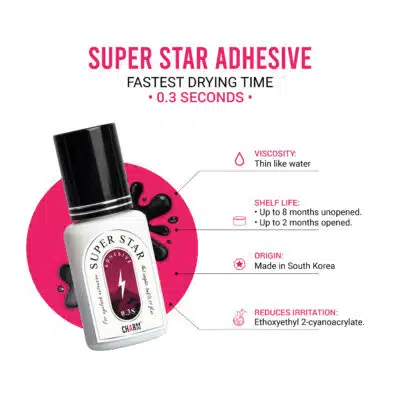
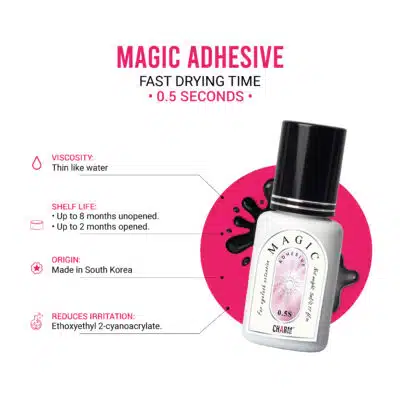
Final Thoughts: Putting Client Safety First
Client safety should always be your top priority as a lash artist. Being allergic to eyelash glue can be unpredictable, but by staying informed about the risks and learning how to manage reactions effectively, you can ensure that both you and your clients are well-prepared. Remember, the best approach is to assess, treat, and minimize—offering guidance and support while remaining professional.
By being proactive, you can help your clients enjoy beautiful lashes without the discomfort of allergic reactions.
Stay tuned for more lash beauty tips by following us on Instagram!
MAYBE YOU WANT TO KNOW MORE:
Red eyes after lash extensions and how to treat it
Lash patch test: Why it is important and how to do
Best glue for individual lashes
 Afrikaans
Afrikaans Albanian
Albanian Amharic
Amharic Arabic
Arabic Armenian
Armenian Azerbaijani
Azerbaijani Basque
Basque Belarusian
Belarusian Bengali
Bengali Bosnian
Bosnian Bulgarian
Bulgarian Catalan
Catalan Cebuano
Cebuano Chichewa
Chichewa Chinese (Simplified)
Chinese (Simplified) Chinese (Traditional)
Chinese (Traditional) Corsican
Corsican Croatian
Croatian Czech
Czech Danish
Danish Dutch
Dutch English
English Esperanto
Esperanto Estonian
Estonian Filipino
Filipino Finnish
Finnish French
French Frisian
Frisian Galician
Galician Georgian
Georgian German
German Greek
Greek Gujarati
Gujarati Haitian Creole
Haitian Creole Hausa
Hausa Hawaiian
Hawaiian Hebrew
Hebrew Hindi
Hindi Hmong
Hmong Hungarian
Hungarian Icelandic
Icelandic Igbo
Igbo Indonesian
Indonesian Irish
Irish Italian
Italian Japanese
Japanese Javanese
Javanese Kannada
Kannada Kazakh
Kazakh Khmer
Khmer Korean
Korean Kurdish (Kurmanji)
Kurdish (Kurmanji) Kyrgyz
Kyrgyz Lao
Lao Latin
Latin Latvian
Latvian Lithuanian
Lithuanian Luxembourgish
Luxembourgish Macedonian
Macedonian Malagasy
Malagasy Malay
Malay Malayalam
Malayalam Maltese
Maltese Maori
Maori Marathi
Marathi Mongolian
Mongolian Myanmar (Burmese)
Myanmar (Burmese) Nepali
Nepali Norwegian
Norwegian Pashto
Pashto Persian
Persian Polish
Polish Portuguese
Portuguese Punjabi
Punjabi Romanian
Romanian Russian
Russian Samoan
Samoan Scottish Gaelic
Scottish Gaelic Serbian
Serbian Sesotho
Sesotho Shona
Shona Sindhi
Sindhi Sinhala
Sinhala Slovak
Slovak Slovenian
Slovenian Somali
Somali Spanish
Spanish Sundanese
Sundanese Swahili
Swahili Swedish
Swedish Tajik
Tajik Tamil
Tamil Telugu
Telugu Thai
Thai Turkish
Turkish Ukrainian
Ukrainian Urdu
Urdu Uzbek
Uzbek Vietnamese
Vietnamese Welsh
Welsh Xhosa
Xhosa Yiddish
Yiddish Yoruba
Yoruba Zulu
Zulu














